Bhutan is just 38,394 km2 in size. To travel from west to east of the country just takes one night and two days on a car through winding mountain roads. Thus taking on this benefit, the journey across Bhutan tour is to give our visitors a choice to travel around the whole country in 15 days tour. With several changes in altitude, landscape, and climate, the tour is tailored to be diverse. Starting from Paro in the far west and ending at SamdrupJongkhar in the far southeast of the country, the tour gives an opportunity to experience Bhutan in depth and comprehend.
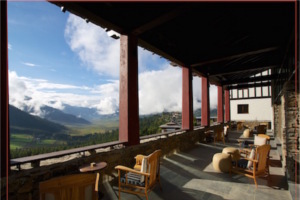
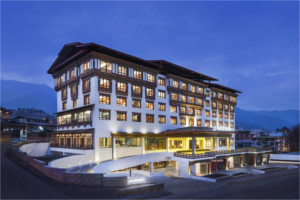
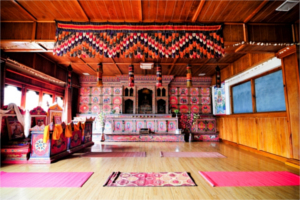
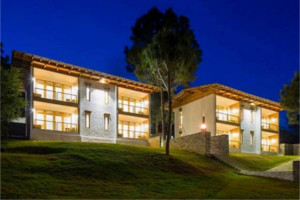
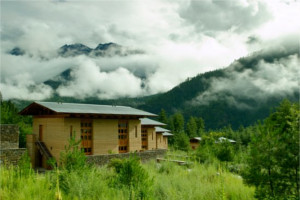
Fly into Paro valley. The fight into Bhutan over the Himalayas is one of the most spectacular experiences. Particularly the flights from Delhi (India) and Kathmandu (Nepal) fly past the majestic Mt. Everest, Kanchenjunga and the entire Himalayan range, visible on the left side of the plane as it glides towards Bhutan. On landing, at Paro, you will be received by our representative. After customs and Immigration formalities, you will be escorted to Thimphu.
Overnight at Paro
Hike up to Paro Taktsang the imposing Tiger’s Nest. The monastery is perched on the cliff side above 900m from the valley. Guru Padmasambhava is believed to have flown up on this site on a Tigress’s back and meditated here for few months and then in 7th century brought Buddhism in the valley down below.
Visit the Dzong with a delightful village nestling at its foot. Built in 1646 by Zhabdrung Ngawang Namgyal to commemorate his victory over the Tibetan invasions, Drukgyel means the Victorious land of the Thunder Dragon. The Dzong caught fire in 1951 and remained as ruin until recently to commemorate birth of Gyalsey the Prince the Dzong is undergoing reconstruction to bring to its former glory.
Overnight at Paro.
Enjoy a day trip to the Haa Valley. The valley is one of the most picturesque districts in Bhutan. Drive via the beautiful Chelela Pass (3900m). Haa Valley is characterized by its surrounding rugged mountainous terrain and unique architectural structures.
Drive back to Paro in the evening.
Overnight at Paro.
Drive to the capital, Thimphu (1.5 hours). Visit the National Memorial Chorten (Stupa), built in memory of the 3rd King of Bhutan. Visit the Art School and Changangkha Lhakhang (a temple built in 12th century by a Tibetan saint).
Visit around the town in the evening.
Overnight at Thimphu.
Visit the National Takin Reserve Center to see Takin, the national animal of Bhutan and Trashichhodzong (fortress of glorious religion). Trashichhodzong in its current form was completed in 1968 and it houses the throne room of His Majesty the King of Bhutan. It is also a center of monastic body and houses main secretariat building. The majestic Dzong located along the Wangchu (Thimphu River) has a Tendrel Thang which is the venue for Thimphu Dromchoe and Thimphu Tsechu, the annual Thimphu Festival where thousands of people fill the courtyard to witness the mask dances, traditional dances, and many more.
Visit Buddha Dordenma, the largest standing Buddha Statue in the world. Buddha Dordenma is 54 meters (177 ft) tall, one of the largest Buddha Shakyamuni statue in the world, fulfilling a prophecy that mentioned a large statue of either Guru Padmasambhava, Buddha or of a (Vajrakilaya) Phurba would be built in the region to bestow blessings, peace, and happiness on the world, the statue erection was started in 2006 and completed in 2015. The statue is mentioned in the ancient Terma of Guru Padmasambhava himself dated from approximately the sixth century, the prophesized Terma was recovered some 672 years ago by Terton Dorje Lingpa (1346) and 104 years and after 568 years ago by Terton Pema Lingpa.
Also visit Folk Heritage museum, Royal Textile Museum and craft markets. Other options for the day include a hike to Tango and Cheri Monasteries (45 mins), two of the most ancient monasteries in the Thimphu region.
Overnight at Thimphu.
Stop at Dochula pass 3100m on route to Punakha from Thimphu. Dochula pass is one of the famous landmarks in Bhutan from which one can sight the Himalayan Range of Bhutan on clear winter days. The place is adorned with Druk Wangyel Chorten, 108 stupas built to honor the 4th king of Bhutan and bring peace to the region. The stupas were built under the patronage of Ashi Dorji Wangmo Wangchuck.
Descend to Punakha Valley (1280m).
Punakha valley served as the capital of Bhutan till 1955 until it was shifted to Thimphu. The Punakha Dzong is still the winter seat of Je Khenpo (Chief Abbot) of the monastic body as the place has a temperate climate with Phochu and Mochu Rivers flowing through the fertile fields of the valley.
Visit Chimmi Lhakhang, the temple of Lama Drukpa Kuenley (The Devine Mad Man). Chimmi Lhakhang was built in 1499 by Lam Ngawang Chogyel on the spot where Lama Drukpa Kuenley subdued a demon who was fleeing away in form of a dog and buried the demon naming the spot as khe mae (no dog now). Hence the temple was named Temple of no dog (Chimmi Lhakhang)
Visit Punakha Dzong.
Punakha Dzong or Pungthang Dewa Chenpai Phodrang, the palace of bliss was built in 1937 by Zhabdrung Ngawang Namgyel. The second oldest Dzong of Bhutan is religiously and architecturally significant to Bhutanese as it houses several sacred relics, scriptures, statues and is the place where the first king of Bhutan was crowned in 1907. Punakha Dzong is also famous for Punakha Drupchen where the 17th-century battle scene with Tibetan invaders are recreated and is followed by Punakha Tsechu where grand Thongdrel of Guru Rinpoche is unfurled with costumed mask dances and rituals.
Overnight at Punakha.
After breakfast drive to Gantey via Wangduephodrang.
Drive to scenic Phobjikha valley, visit Gantey Goemba, the only Nyingmapa monastery in western Bhutan. Phobjikha is a most scenic valley in Bhutan and is often described as picturesque, breathtaking and many more by the visitors.
Known for its vast valley landscape and winter home for Black-Necked Crane, Phobjikha valley at an altitude of 3000m is one of the most famous tourist destinations in western Bhutan. The vast U shaped valley offers lots of scenic hiking routes and nature trails for the visitors. Overlooking the valley is the Gantey Goemba the oldest Nyingmapa Monastery which dates back to 17th century. The monastery also is the venue for the annual Black-Necked Crane Festival.
Visit the Nature Conservation Centre and learn about the black necked Cranes that fly into this valley from Tibet every winter.
Overnight at Phobjikha.
Drive across the Pele La pass (3,420m) on the Black Mountain range towards Trongsa. On the way, visit the beautiful 18th-century Chendebji Chorten. Trongsa is the ancestral home of Bhutan’s ruling dynasty. Visit Trongsa Dzong, the largest Dzong in Bhutan and the Ta Dzong museum housing a collection of historical artifacts of the Royal Family.
Overnight at Trongsa.
After breakfast, proceed towards Bumthang (2.5 hrs), the spiritual heart of the kingdom. Bumthang is home to some of Bhutan’s oldest Palaces, Buddhist temples, and monasteries. On arrival, visit Jakar Dzong (Dzong of the White Bird) and the 16th-century Tamshing Lhakhang containing ancient Buddhist wall paintings. After lunch visit Kurje Lhakhang, one of the most sacred places in the kingdom and 7th Century Jambay Lhakhang.
Overnight at Bumthang.
Visit Tamshing Lhakhang
The Tamshing Lhundrup Monastery is believed to be of Pemalingpa (1450-1521) the great Treasure Discoverer. The monastery is also on tentative lists of world heritage sites.
Visit the Burning Lake
Mebartso which translates to “the burning lake” is at about 5 minute drives from the road point. The lake is named after Terton (treasure discoverer) Pema Lingpa. The treasure discoverer is believed to have gone into the lake with a lit butter lamp and came back with the lamp still burning while he discovered Guru Rinpoche’s hidden treasures, hence the name of the lake.
Visit Tang village and the Tang Nunnery founded by the 9th Gangtey Trulku Rinpoche. According to convenience and time, excursion to beautiful Ura Valley.
Overnight at Bumthang.
The journey to Mongar takes about 6 hours with spectacular views en route. Drive through Ura village before climbing sharply to the highest point on Bhutan’s road network, Thrumsing-La Pass (4,000m). From here, the road gradually passes through picturesque Alpine valleys, pine forests, maize fields and hamlets to reach Mongar town. Visit Mongar Dzong, built in the 1930s using the traditional process without either plans or the use of nails.
Overnight at Mongar.
Drive to Trashigang (3 hrs) through leafy forests filled with ferns. Cross Kori-La Pass (2,450m) before descending through cornfields and banana groves, drive along the famous zigzagging road just below Yadi until reaching Trashigang. Trashigang is the main town and one of the largest districts in the country.
After lunch visit Trashigang Dzong.
Overnight at Trashigang.
Visit the Monastery of Gomphu Kora and Doksum village where you can see women busily weaving traditional Bhutanese fabric before reaching Tashiyangtse. The area is famous for its unique wood crafts. Visit the Tashiyangtse Dzong and the dazzling white stupa of Chorten Kora. Then visit the nearby Institute for Zorig Chusum where youths are trained with Bhutan’s 13 traditional arts and crafts.
Drive back to Trashigang in the evening.
Overnight at Trashigang.
After breakfast drive to Samdrup Jongkhar, the gateway to eastern Bhutan and Assam, India. It is about 9 hours’ drive from Trashigang with many beautiful villages and landscapes on the way.
Overnight at SamdrupJongkhar.
After breakfast, your guide will arrange an Indian vehicle your transfer to Guwahati, the capital town of the Indian north-eastern state of Assam, for your onward flight.
daily tariff:USD 250 Per person per night
surcharges:
Solo Traveller: USD 40 per night
Dual Traveller: USD 30 per person per night
Three travellers and above: surcharges not applicable
Visa fees: One time payment of USD 40 per person.
daily tariff:USD 200 Per person per night
surcharges:
Solo Traveller: USD 40 per night
Dual Traveller: USD 30 per person per night
Three travellers and above: surcharges not applicable
Visa fees: One time payment of USD 40 per person.
A minimum of 3 star accommodation (4 & 5 star may require an additional premium).
All meals
A licensed Bhutanese tour guide for the extent of your stay
All internal transport (excluding internal flights)
Camping equipment and haulage for trekking tours